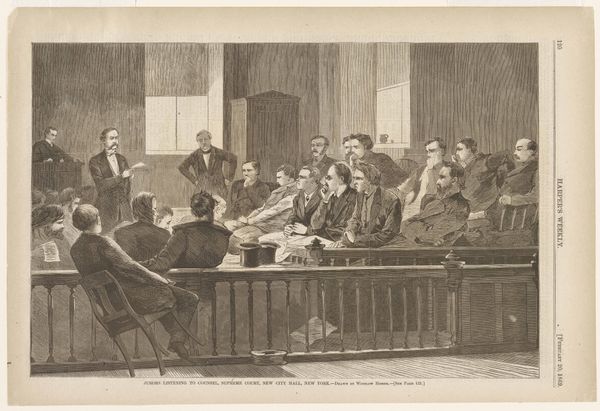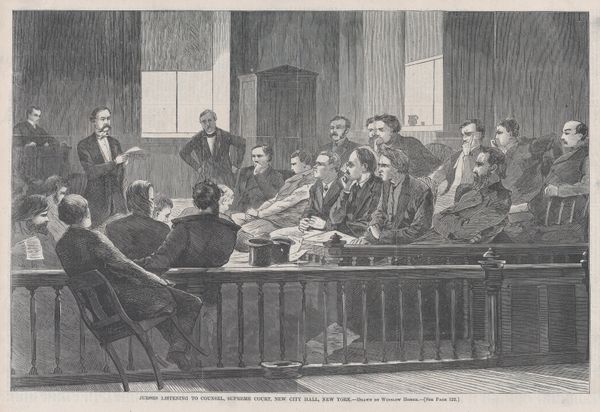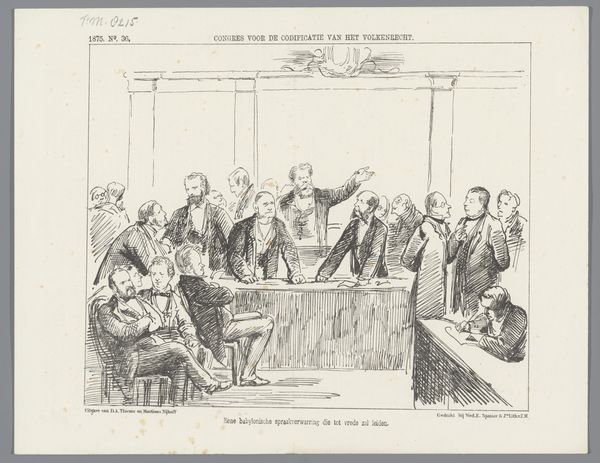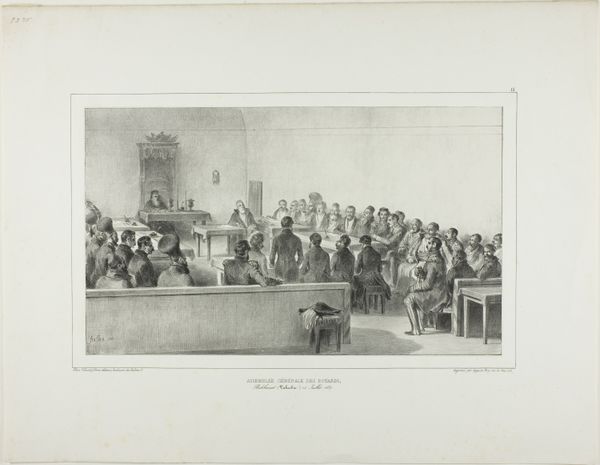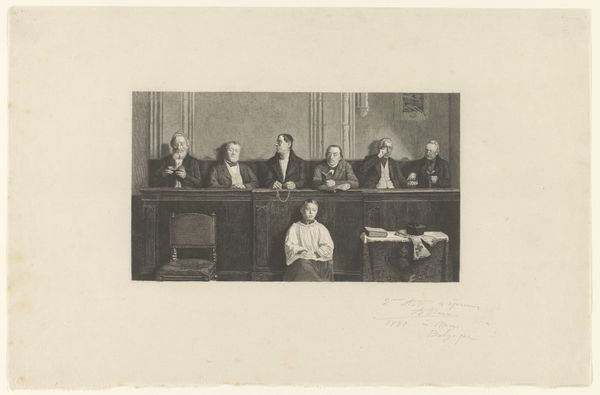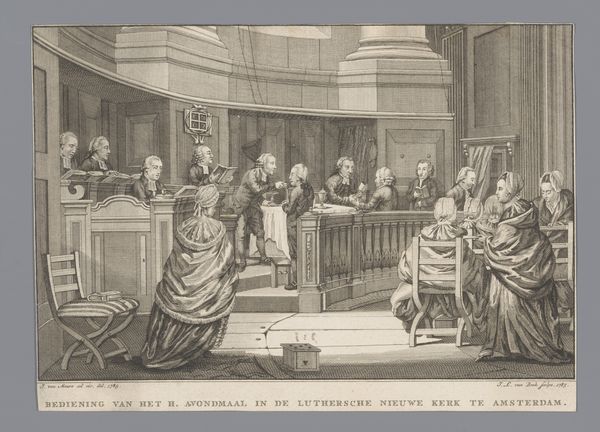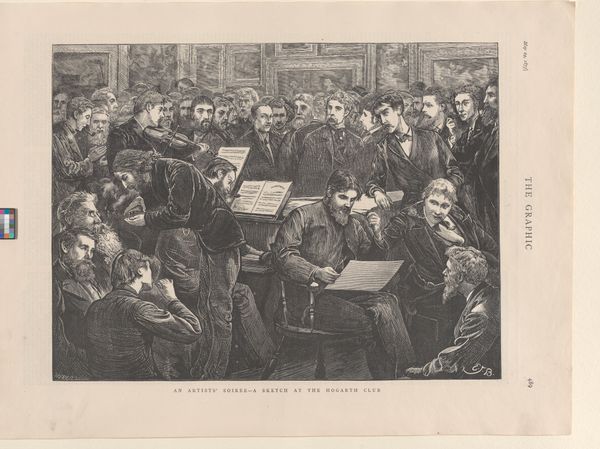
drawing, print, woodcut, wood-engraving, engraving
#
drawing
#
16_19th-century
# print
#
woodcut
#
19th century
#
united-states
#
genre-painting
#
history-painting
#
wood-engraving
#
engraving
Dimensions: 9 1/4 x 13 11/16 in. (23.5 x 34.77 cm) (image)11 3/16 x 15 7/8 in. (28.42 x 40.32 cm) (sheet)
Copyright: Public Domain
Curator: Let’s turn our attention to Winslow Homer's “Jurors Listening to Counsel,” an engraving created in 1869, now held here at the Minneapolis Institute of Art. Editor: It strikes me as a study in concentrated observation; there's a palpable sense of gravity weighing on these men, even with the limitations of the engraving technique. Curator: Precisely. The stark contrasts achieved through the wood-engraving, with its dense cross-hatching, not only define the forms but emphasize the somber atmosphere within the courtroom. It allows for the expression of tonal variations crucial in conveying depth. Editor: Yes, but let’s consider the social context of its production. Wood engravings like these were instrumental in disseminating images quickly and widely through publications like *Harper’s Weekly.* Homer wasn't just creating a piece of fine art, he was engaged in a commercial and social project, illustrating and informing the public through mass-produced imagery, democratizing access to these events. Curator: Granted, but the composition itself is remarkable. Notice the careful arrangement of the jurors; Homer directs our gaze with strategic placements, almost as though the subjects are part of a theatrical play, their postures creating a compelling rhythmic structure within the scene. The artist creates a structured, albeit imperfect, aesthetic that remains powerfully enduring. Editor: I'm more interested in how the labor is distributed in this artistic endeavor. Homer might be the named artist, but think about the engravers translating his designs onto the block, the press operators printing thousands of copies—the finished product bears the marks of many hands. It asks, fundamentally, where the 'art' truly resides within the final object and process? Curator: Regardless of its manufacture and dispersal, "Jurors Listening to Counsel” uses tonal economy to portray the judiciary process. Its structural components and expressive impact underscore its importance within Homer's body of work. Editor: It's fascinating to consider how seemingly quotidian objects, when analyzed, yield profound insights into not just aesthetic forms, but also the social and material conditions that enabled their production and consumption. I see the engraving not as isolated aesthetic expression but as historical artifact enmeshed in production of knowledge.
Comments
No comments
Be the first to comment and join the conversation on the ultimate creative platform.
